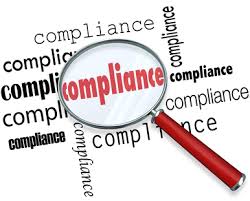3 Ways to Improve Compliance Training
 As the compliance profession matures and evolves, the elements of an effective compliance program follow a similar pattern.
As the compliance profession matures and evolves, the elements of an effective compliance program follow a similar pattern.
Compliance training programs have become more sophisticated over the last five years, as regulators have paid more attention to the issue, and companies have recognized the importance of training as an effective means to communicate directly to managers and employees about ethics and compliance expectations.
The FCPA Guidance issued in November 2012 by the Department of Justice and the SEC, along with recent enforcement actions, have underscored the importance of compliance training, and the need for careful management of training content and record-keeping to verify manager and employee participation.
Beyond these basic requirements, compliance training is ready to evolve to the next level. Some of this reflects regulatory concerns about the content quality, and some reflects the failure of companies to ensure wide-participation in training programs, most especially at the board level.
Do Not Forget the Board and the C-Suite: Too many training programs fail to conduct adequate training of corporate boards and C-Suite Executives. If a training program omits these important actors/actresses, the training program is deficient on its face. At a minimum, the Board and the C-Suite need to be trained on all significant risks each year. No ifs, ands or buts – it has to be done. If not, it should be done and arranged now.
The reasons for this are obvious – the board and senior management are responsible for compliance, and if they are too important to take the time to attend training and update their own compliance awareness, why should managers and employees care (unless they are going to be compliance scapegoats).
A recent NAVEX Global survey (Here) revealed that training time for senior corporate leaders and boards has declined in the past year. The drop was by an average of 90 minutes per year for senior leaders, and 60 minutes for corporate boards.
Twenty-five (25) percent of firms have no dedicated budget for ethics and compliance training.
This decline in training hours is a serious deficiency and is a trend that needs to be reversed.
Focus on the Content and the Audience. The more time that is dedicated to focusing on training content and audiences, the better a training program. Too often companies run generalized anti-corruption training programs and consider this to be an adequate training presentation.
Regulators are taking more time to review company compliance training programs to determine overall effectiveness. An SEC official this month gave a speech in which he indicated that examiners were reviewing anti-money laundering training at broker-dealers by “the function being performed” and the “Specific business activities of the firm.” Generic training programs  are antithetical to a program that delivers relevant conduct tailored to specific risks, scenarios and hypotheticals.
are antithetical to a program that delivers relevant conduct tailored to specific risks, scenarios and hypotheticals.
Measuring the Effectiveness of Training. More companies are conducting surveys as part of a training program. At the conclusion of the program, they ask participants to provide feedback on whether the program content was helpful. A company should spend more time developing valuable metrics beyond a survey requesting feedback from the training attendee. It is difficult to subject attendees to meaningful tests, instead of a list of valuable metrics such as surveys on familiarity with legal and Code requirements. An analysis of code of conduct violations may reveal participants and types of issues that are occurring and reflect a lack of training of appropriate employees and content issues.















